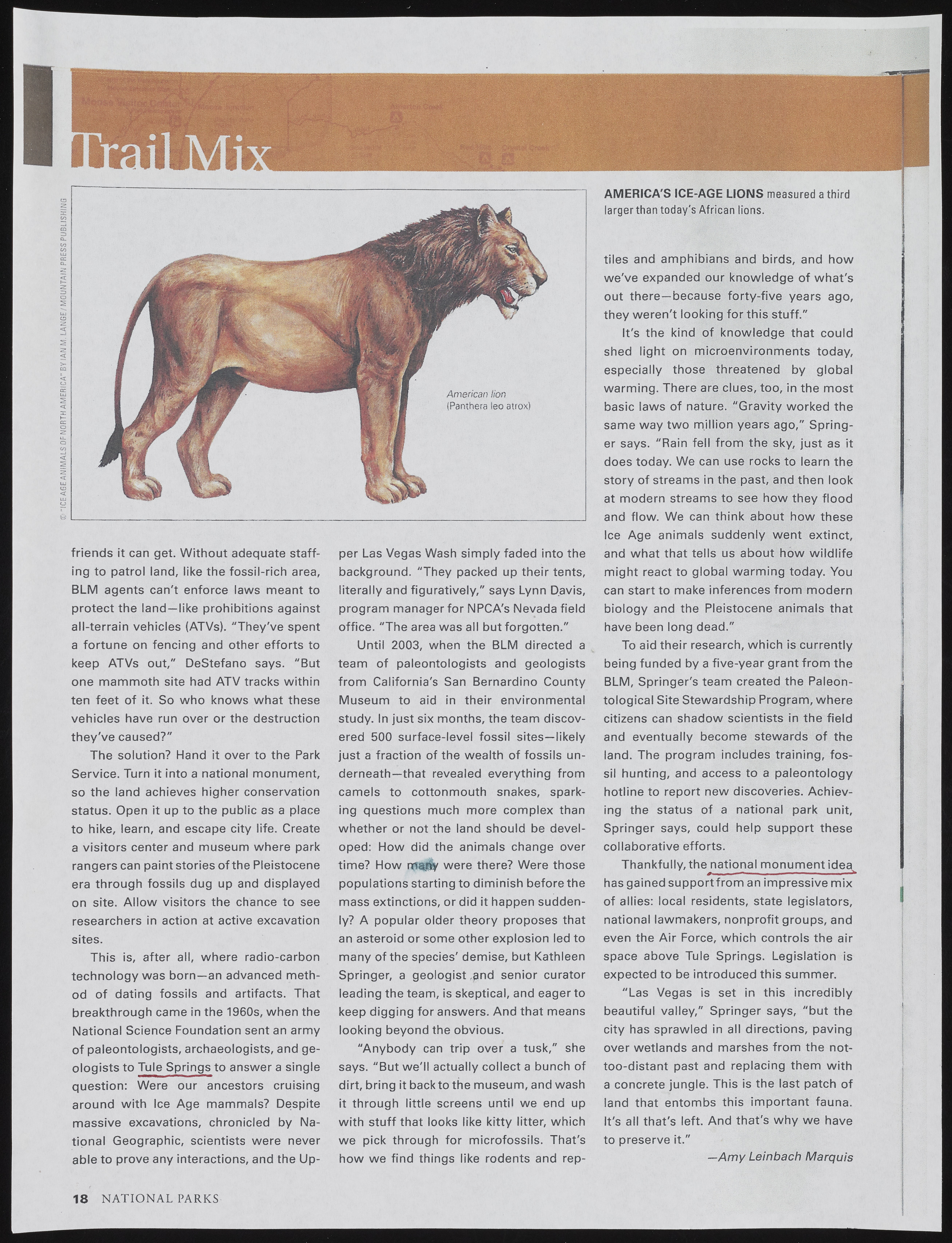Copyright & Fair-use Agreement
UNLV Special Collections provides copies of materials to facilitate private study, scholarship, or research. Material not in the public domain may be used according to fair use of copyrighted materials as defined by copyright law. Please cite us.
Please note that UNLV may not own the copyright to these materials and cannot provide permission to publish or distribute materials when UNLV is not the copyright holder. The user is solely responsible for determining the copyright status of materials and obtaining permission to use material from the copyright holder and for determining whether any permissions relating to any other rights are necessary for the intended use, and for obtaining all required permissions beyond that allowed by fair use.
Read more about our reproduction and use policy.
I agree.Information
Digital ID
Permalink
Details
More Info
Rights
Digital Provenance
Publisher
Transcription
friends it can get. Without adequate staffing to patrol land, like the fossil-rich area, B LM agents can't enforce laws meant to protect the land— like prohibitions against all-terrain vehicles (ATVs). "They've spent a fortune on fencing and other efforts to keep ATVs out," DeStefano says. "But one mammoth site had ATV tracks within ten feet of it. So who knows what these vehicles have run over or the destruction they've caused?" The solution? Hand it over to the Park Service. Turn it into a national monument, so the land achieves higher conservation status. Open it up to the public as a place to hike, learn, and escape city life. Create a visitors center and museum where park rangers can paint stories of the Pleistocene era through fossils dug up and displayed on site. Allow visitors the chance to see researchers in action at active excavation sites. This is, after all, where radio-carbon technology was bom — an advanced method of dating fossils and artifacts. That breakthrough came in the 1960s, when the National Science Foundation sent an army of paleontologists, archaeologists, and geologists to Tule Springs to answer a single question: Were our ancestors cruising around with Ice Age mammals? Despite m assive excavations, chronicled by National Geographic, scientists were never able to prove any interactions, and the Upper Las Vegas Wash simply faded into the background. "They packed up their tents, literally and figuratively," says Lynn Davis, program manager for N PCA's Nevada field office. "The area w as all but forgotten." Until 2003, when the BLM directed a team of paleontologists and geologists from California's San Bernardino County M useum to aid in their environmental study. In just six months, the team discovered 500 surface-level fossil sites— likely just a fraction of the wealth of fossils underneath— that revealed everything from camels to cottonmouth snakes, sparking questions much more complex than whether or not the land should be developed: How did the animals change over time? How nffsgiy were there? Were those populations starting to diminish before the m ass extinctions, or did it happen suddenly? A popular older theory proposes that an asteroid or some other explosion led to many of the species' demise, but Kathleen Springer, a geologist ,pnd senior curator leading the team, is skeptical, and eager to keep digging for answers. And that means looking beyond the obvious. "Anybody can trip over a tusk," she says. "But w ell actually collect a bunch of dirt, bring it back to the museum, and wash it through little screens until we end up with stuff that looks like kitty litter, which we pick through for microfossils. That's how we find things like rodents and rep- A M E R IC A 'S IC E -A G E L IO N S measured a third larger than today's African lions. tiles and amphibians and birds, and how we've expanded our knowledge of w hat's out there— because forty-five years ago, they weren't looking for this stuff." It's the kind of knowledge that could shed light on microenvironments today, especially those threatened by global warming. There are clues, too, in the most basic laws of nature. "Gravity worked the same way two million years ago," Springer says. "Rain fell from the sky, just as it does today. We can use rocks to learn the story of streams in the past, and then look at modem streams to see how they flood and flow. We can think about how these Ice Age animals suddenly went extinct, and what that tells us about how wildlife might react to global warming today. You can start to make inferences from modern biology and the Pleistocene animals that have been long dead." To aid their research, which is currently being funded by a five-year grant from the BLM, Springer's team created the Paleontological Site Stewardship Program, where citizens can shadow scientists in the field and eventually become stewards of the land. The program includes training, fossil hunting, and access to a paleontology hotline to report new discoveries. Achieving the status of a national park unit, Springer says, could help support these collaborative efforts. Thankfully, the national monument idea has gained support from an impressive mix of allies: local residents, state legislators, national lawmakers, nonprofit groups, and even the Air Force, which controls the air space above Tule Springs. Legislation is expected to be introduced this summer. "Las Vegas is set in this incredibly beautiful valley," Springer says, "but the city has sprawled in all directions, paving over wetlands and m arshes from the not-too- distant past and replacing them with a concrete jungle. This is the last patch of land that entombs this important fauna. It's all that's left. And that's why we have to preserve it." — Am y Leinbach Marquis 1 8 NATIONAL PARKS

